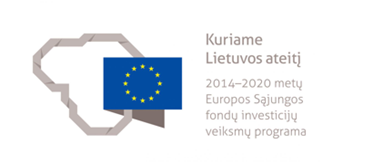Lithuanian natural gas transmission system operator Amber Grid has signed an agreement with the Lithuanian Business Support Agency (LBSA) under which European Union support will be allocated for the modernisation of important system elements located in western Lithuania. A total of EUR 4 million are planned to be spent to substantially reconstruct the Telšiai and Šiauliai gas distribution stations and modernise the Mažeikiai gas metering station by 2023. Half of this amount – EUR 2 million – will be financed from EU Structural Funds.
“By investing in the renovation of the core elements of the Lithuanian gas transmission system, we are striving to ensure a crucial indicator – the reliability of gas supply, which is relevant to our customers for maintaining uninterrupted operations,” says Amber Grid CEO Nemunas Biknius.
The Telšiai and Šiauliai gas distribution stations will be installed in new buildings equipped with advanced technological equipment. Economical boilers will be installed that will use less gas, which will reduce atmospheric pollutants. New gas pressure relief devices and meters will also be put in, as will automated control, remote data transmission and alarm systems. This will reduce the likelihood of accidents and disruptions. In addition, new electrical engineering and grounding equipment will be installed, and the territory will be cleaned up.
The main purpose of gas distribution stations is gas metering and reducing the gas pressure to the pressure required by the distribution system operator. Other important technological processes, such as gas purification, heating and odorisation (adding an odorant to the gas), are also carried out at the station.
These projects are a continuation of the long-term renovation programme for Amber Grid’s gas distribution stations, which the gas distribution network operated by Energijos Skirstymo Operatorius (ESO) as well as large gas transmission system users are connected to.
“The Lithuanian gas transmission system is becoming modern and adapted to today’s gas consumption needs. Ensuring the quality of the gas transmission network and timely maintenance of the infrastructure conditions people’s safety, less environmental pollution, and optimal network maintenance costs,” says Mr Biknius.
In the implementation of the gas distribution station modernisation programme, the 40- or 50-year-old equipment used at virtually all of the stations is being replaced with modern equipment purchased from Western European manufacturers that meets European standards.
The Lithuanian gas transmission system is made up of more than 2,000 kilometres of underground gas pipelines, 65 gas distribution stations, three gas metering stations, and two compressor stations.
